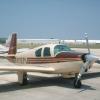More New Aerodynamics
-
Members Online
- 1980Mooney
- Sabremech
- flyboy1422
- eman1200
- Jeff Uphoff
- Bartman
- Mikey30V
- Will.iam
- Scooter
- PeteMc
- EricJ
- ajudson
- 201Steve
- Flyler
- bluehighwayflyer
- hammdo
- Shadrach
- Jarerh
- MikeOH
- donkaye, MCFI
- Blaze
- Skyland
- Fly Boomer
- Mreed420
- kortopates
- tls pilot
- Rmnpilot
- DMM
- Vance Harral
- Crawfish
- DanM20C
- Andy95W
- Ragsf15e
- Scott Ashton
- Parker_Woodruff
- DXB
- exM20K


Recommended Posts